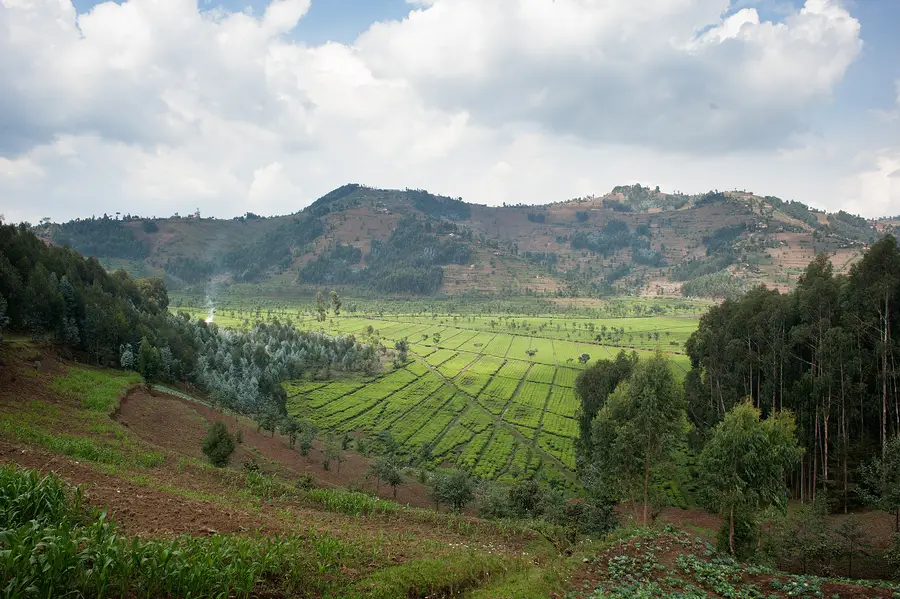Insights
5 Strategies to Adapt to and Mitigate Environmental Impacts in Global Agriculture

Photo Credit: Will Boase
Agriculture is one of the sectors most exposed to physical risks from environmental changes and shifting weather patterns. Its impact is already evident in food systems and is expected to slow progress in improving global nutrition and health. Furthermore, agri-food systems are a major contributor to global greenhouse gas emissions, responsible for an estimated 31% of total anthropogenic emissions.
While much is at stake, the development and implementation of solutions at the local level can prove challenging due to the vast variability in environmental impacts.
Here, we’re sharing five strategies to reduce emissions and strengthen resilience for a more sustainable agriculture sector:
1. Strengthen Adaptive Solutions and Resilience
Studies suggest that changing weather patterns will hinder the cultivation of certain crops in areas where they’re currently grown, with impacts that vary across crops. In the Midwestern United States, for example, under some scenarios wheat yields could increase, while corn and soybean productivity may drop. In Rwanda, there is expected to be a more severe impact on the drier eastern part of the country and a neutral or even positive impact on farms in the uplands. Farmers can change or diversify their crop mix and management practices or adjust their planting or harvesting dates in response to changes in expected yields. However, infrastructure logistics, knowledge, access to finance, markets, and other factors can present challenges to large-scale adjustments. Wider availability of readily usable data, as well as new analytics, could help markets prioritize agricultural investments, such as for irrigation, processing plants, or new crops that are better suited to the changing conditions. Indoor farming may also be an option in some regions, as well as adoption of sustainable crop varieties with traits such as heat, drought, flood, and salinity tolerance. Given the spatial variability of climate impacts and abundance of local knowledge, locally led solutions involving multi-stakeholder perspectives will become increasingly important to define optimal strategies for each locale.
Shifting weather patterns also bring extreme weather events, including increasingly frequent and severe droughts and floods. Building resilience means ensuring that communities can quickly bounce back from these shocks. Agricultural communities everywhere can also become more resilient to the effects of changes by improving soil health, adopting good agricultural practices, and developing varied and flexible market systems.
2. Support Sustainable Intensification
As environment impacts make current agricultural systems less profitable, or even untenable in certain regions, it’s likely that farmers and pastoralists will begin to seek out new grazing and farmland. In certain parts of Africa, rising temperatures in the lowlands could prompt farmers to move into the cooler highlands. However, clearing grasslands and forests for agricultural use leads to biodiversity loss and releases large amounts of carbon, which further exacerbates the impacts. At the same time, population growth is already creating pressure to convert forests to farms as nations work to meet the demand for more food production.
We can help agriculture stay within its existing footprint by promoting sustainable intensification practices that boost production on the same amount of land. Such practices include no- or minimum-tillage, inter- or double-cropping, cover crops, more efficient use of fertilizer and irrigation, cultivation of more nutrient-dense crops, and optimized feeding, grazing, and herd health practices. Intensification also boosts yields, which increases farm incomes, giving farmers the cash needed to finance improvements that support resilience. It is a widely held myth that rotating crops to achieve year-round production or cultivating cover crops will deplete or overtax the soil. Growing a diverse mix of crops throughout the year can actually improve soil health and increase soil carbon. However, applying this strategy at scale will require additional investments aimed at improving access to and uptake of more intensive yet sustainable farming practices.
3. Foster Global Food Security
Research suggests that climate shifts are likely to have negative effects on agricultural yields, though that scenario may be partially offset by the fertilization effect achieved from higher levels of carbon dioxide (CO2) in the atmosphere. Other things being equal, plants exposed to elevated CO2 may grow faster and larger. However, absorbing more CO2 may lead to reduced protein and micronutrient levels. We need to ensure that yields continue to increase and that communities have access to nutritious diets that promote healthy populations. This can be achieved in part through the resilience and sustainable intensification strategies addressed above. We also need to explore the viability of agricultural innovations, such as producing lab-cultured protein, using insects for animal feed (and human food), and finding new ways to effectively supplement diets with key vitamins and minerals.
4. Prioritize Reducing Greenhouse Gas Emissions
Thankfully, many of the solutions needed to promote adaptation and resilience in the agricultural sector can simultaneously mitigate impacts by reducing greenhouse gas emissions. The agricultural sector contributes to greenhouse gas production through land conversion, reliance on nitrogen-based fertilizers, and methane emissions from ruminant digestive processes, livestock manure, and rice cultivation. Potential mitigation measures include adopting emerging technologies such as “green” ammonia, which could reduce the sizable carbon footprint of fertilizer production. Cattle could be fed forage that is more easily digested and boosts productivity. Improved livestock feeding practices can also substantially reduce methane emissions. Currently, mitigation potential from agriculture tends to be larger in high-income countries because many currently available mitigation technologies are more readily applicable in the intensive systems typical of those countries. However, low- and middle-income countries account for most of the global emissions from the agriculture, forestry, and land use sectors, making it vital to further develop strategies that can be implemented effectively in those regions.
5. Taking Action to Reduce Agriculture’s Carbon Footprint
Models and the weather extremes experienced in recent years, such as prolonged droughts and the heat waves of this past summer, offer warnings that we must make significant progress in reducing agriculture’s carbon footprint by 2030 to remain within the 1.5C target. If we miss the target, we likely will need to consider very different solutions because we will have crossed major ecological and planetary tipping points. Though we clearly need to conduct more research, particularly applied research on agriculture, water, and health impacts, if we wait until we have a comprehensive solution, it will be too late to act. Our challenge now is to take a holistic approach to addressing this pressing global issue while also consulting with local communities and adopting effective strategies on a location-specific basis.
Disclaimer: This piece was written by Robert H. Beach (RTI Fellow, Agricultural, Resource & Energy Economics and Policy Program), Tracy Mitchell (Director, Agriculture), and Daniel Lapidus (Director of Sustainable Agriculture and Food Systems and RTI Climate Liaison) to share perspectives on a topic of interest. Expression of opinions within are those of the author or authors.



